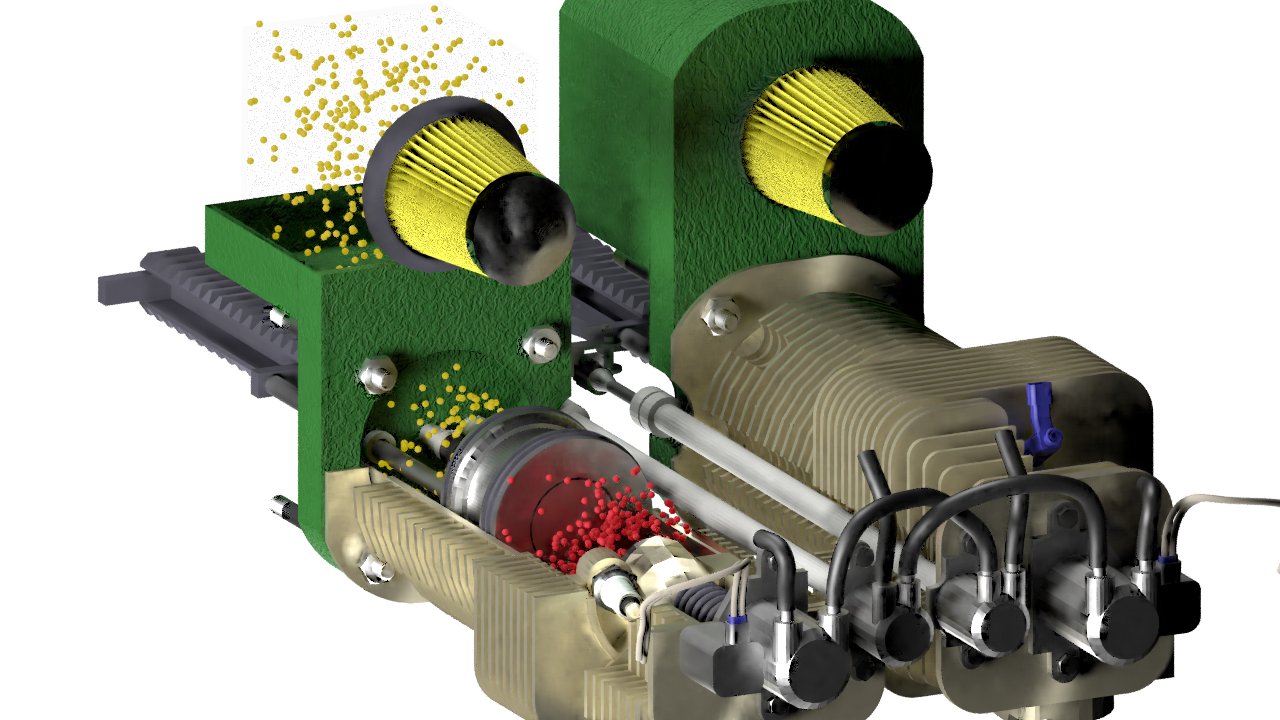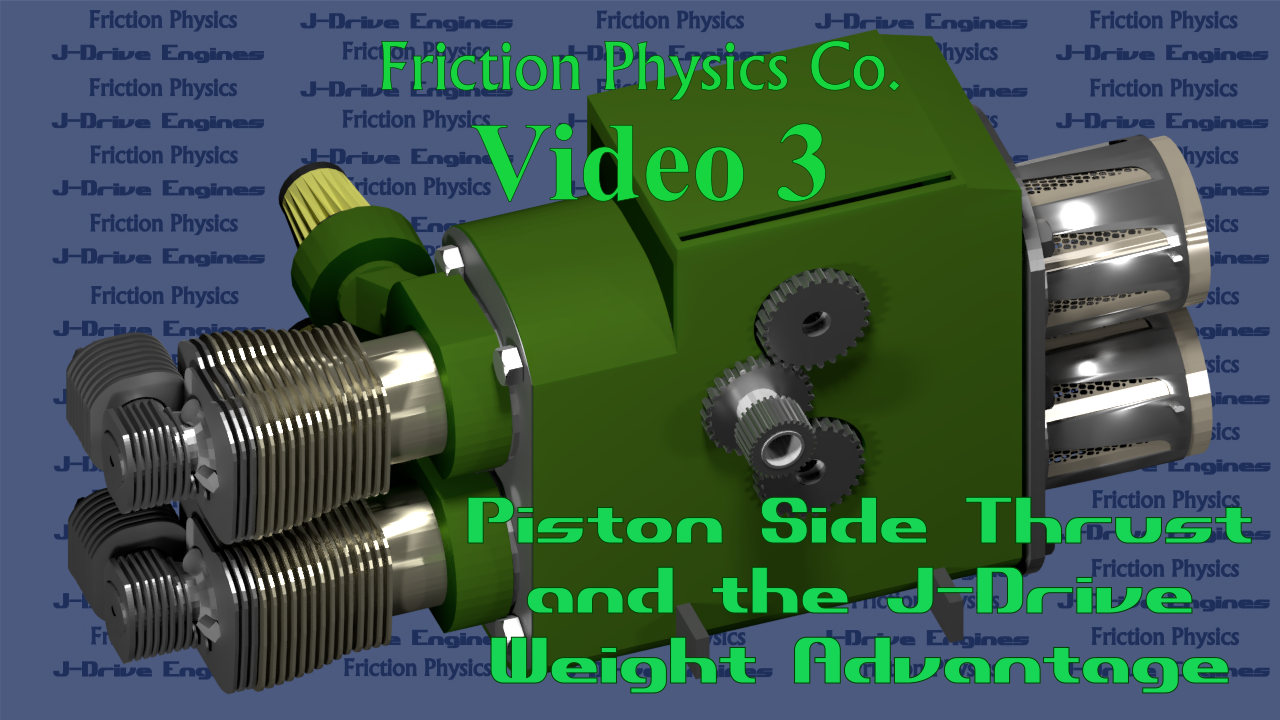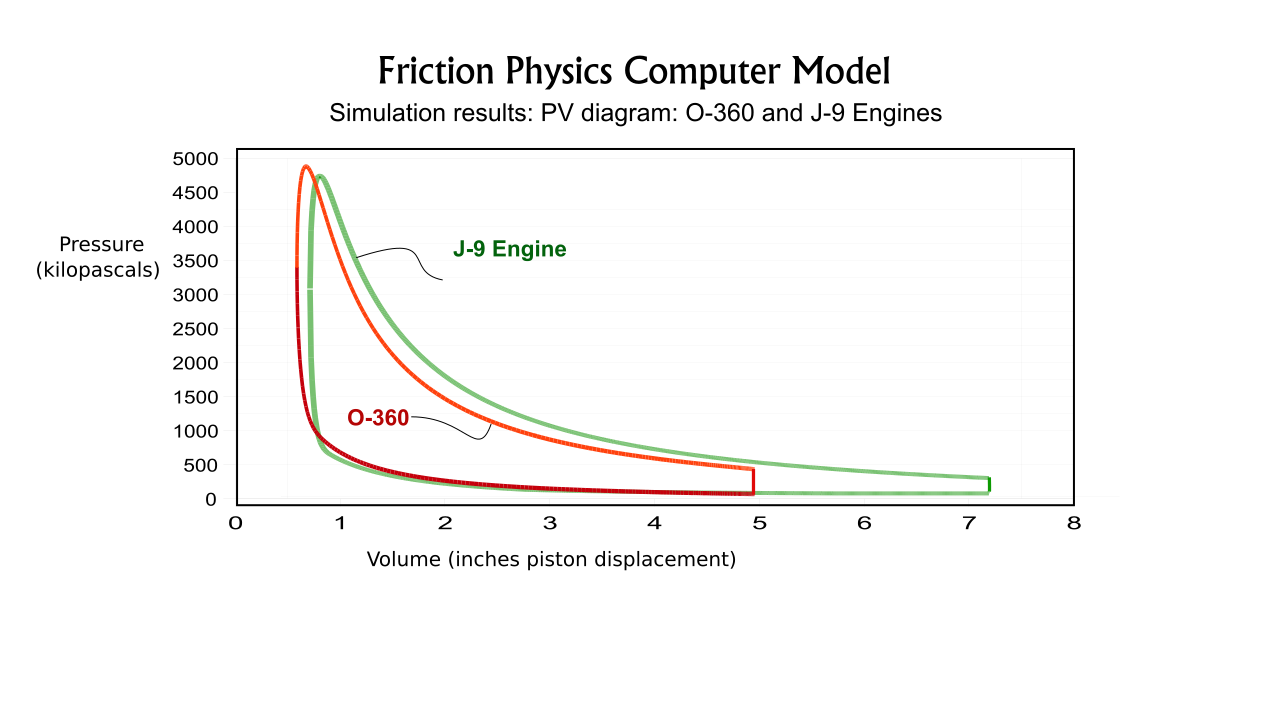
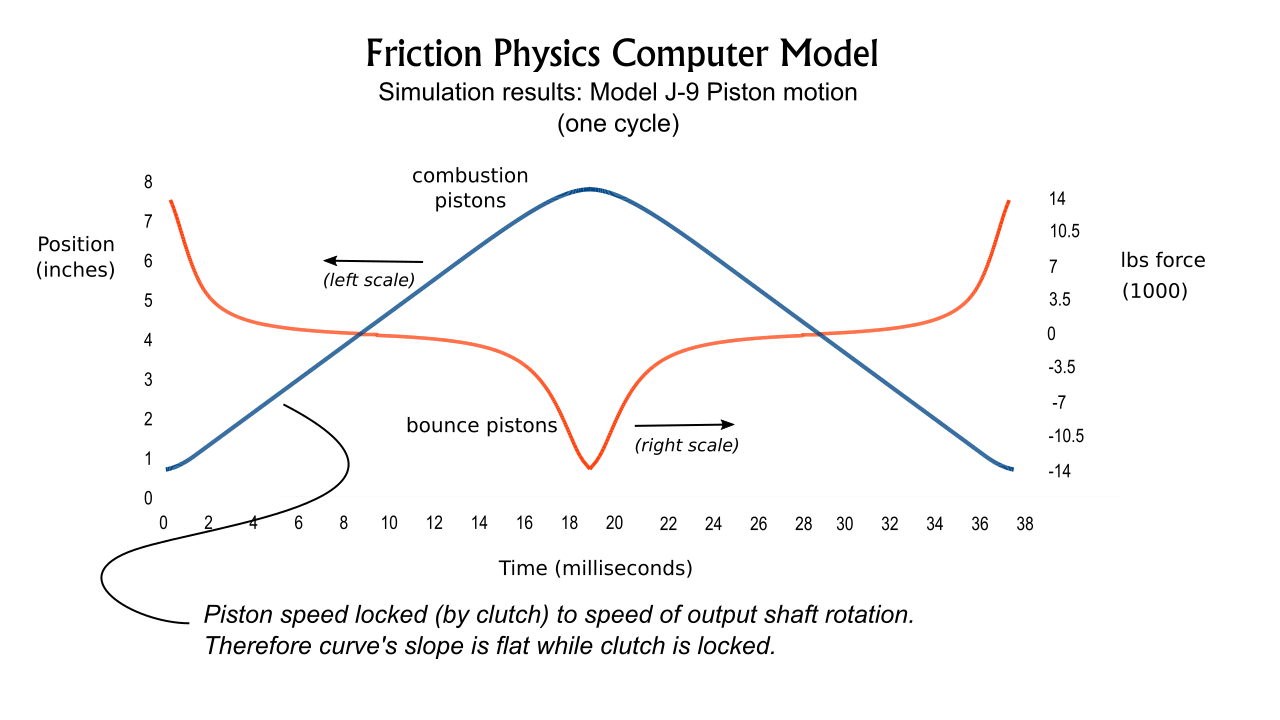
Highlights of our best videos. 75 seconds. Nice music. Check out our Video Gallery for more.
- 1Efficiency
- 2Videos and Charts
How the J-Drive Increases Efficiency
J-Drive engines combine 3 fuel saving technologies, each one of which bring substantial efficiency gains. The three together add up for a revolutionary advance in engine performance. The result: greatly reduced carbon emissions and greatly reduced NOx (nitrous oxides) emissions.
Benefits are especially great for the field of aviation. All current aircraft IC engines require LEADED high-octane aviation fuel and are big NOx polluters. The EPA repeatedly proposes a ban on leaded aviation fuel, but such a ban would ground nearly all GA aircraft. But J-Drive technology improves aircraft performance even while using unleaded automotive fuel.
- greatly reduced friction
- ultra-lean burn fuel mixtures
- very long stroke lengths
Reduced Friction
In all current internal combustion engines more than 10% of the power delivered to the shaft is consumed by friction. This friction is produced by the crankshaft bearings, piston side-thrust and valve-train camshafts. J-Drive engines have no camshafts, no crankshafts and produce no piston side-thrust. Reduced friction increases efficiency from 5% (minimum!) to 8.5%.
Lean-Burn Technology
It is well known that engine efficiency increases as fuel mixture is decreased (made leaner).[1] J-Drive engines are ideally suited for ultra-lean fuel mixtures. Ultra-lean fuel mixtures offer substantial efficiency gains while nearly eliminating NOx pollutants. Ultra-lean burn technology is difficult to build into a crankshaft, 4-stroke engine. 1) Lean mixtures produce less energy, thus reducing the engine's horsepower. 2) Lean mixtures burn slower, so engine speed must run slower to allow time for full combustion. This further reduces engine horsepower.
Because the engine uses a 2-stroke cycle, J-Drives already run at half the engine speed of 4-strokes (while producing equal number of power strokes). This allows lean mixtures time for complete combustion.
The reduced energy produced by ultra-lean fuel mixtures is equalized by the J-Drives next feature: the J-Drive's very long stroke length. By increasing the intake stroke length the amount of fuel burned is maintained even as the fuel mixture is made leaner. Therefore power output is maintained.
Another advantage of lean-burn operation comes in the form of increased compression ratio. Higher compression ratios increase efficiency. But engine knock (pre-detonation) is problematic with normal fuel mixtures burning in high compression engines. For aviation and race car engines this means leaded, high octane fuel must be used. But unleaded regular automotive fuel can be used in a high compression J-Drive engine because ultra-lean mixtures do not pre-detonate.
The J-Drive's ultra-lean burn technology increases efficiency by another 20% to 25%.
Marine-Type Long Stroke Lengths
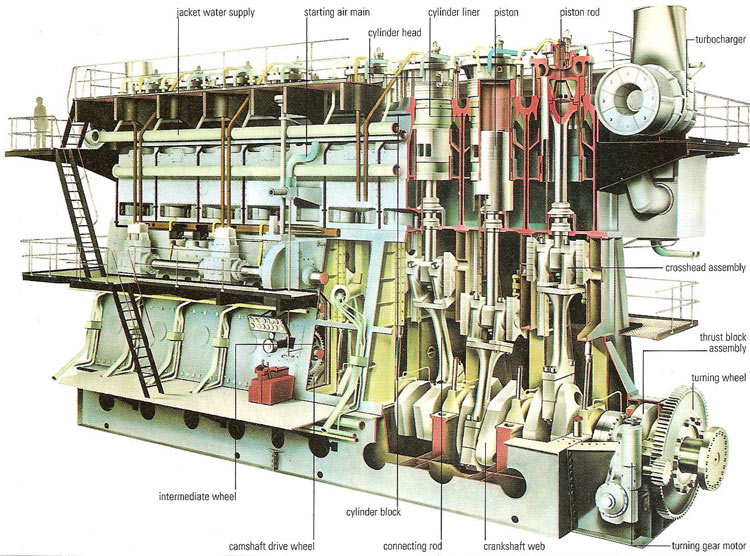
|
The most efficient internal combustion engines in the world are found in the marine industry, engines for container ships, oil tankers,
etc. These engines achieve fuel efficiencies nearing 50% and more. And these efficiencies are obtained without
the friction reduction or lean-burn techniques described above. Their efficiency is attributable in the main to one factor:
Long Stroke Length.
Consider the illustration on the left and note the extremely long length of the combustion chamber.[2] A MAN model 9S80ME-C9.2-GI engine, for example, has a stroke length of 3.45 meters vs. a piston diameter of 0.8 meter. That's a ratio of over 4.3 : 1! In a crankshaft engine a mechanism called a "crosshead assembly" must be installed to obtain these stroke lengths. As viewable on the left, the crosshead assembly is huge and heavy. Out of the question for smaller transport engines. The free-piston J-Drive engine can easily obtain marine-engine type stroke lengths, thereby achieving marine-grade engine efficiencies. The J-Drive's long stroke length provides an additional 10% to 20% increase in engine efficiency. |
Model J-9 Performance: 75% Power Cruise at 5000 feet altitude
| Characteristic | O-360 Simulation | O-360 Published | Model J-9 | notes |
|---|---|---|---|---|
| Power | 135 HP | 135 HP | 190 HP | |
| Fuel Rate | 9.8 gal/hr | 9.5-10 gal/hr | 11 gal/hr | |
| HP per (gal/hr) rate | 13.75 HP/gal | 17.6 HP/gal | inverse of gal/HP | |
| EGT | 1406 °F | 1350 to 1450 °F | 1000 °F | Exhaust Gas Temp. |
| CHT | 353 °F | 350 to 435 °F | 275 °F | Cylinder Head Temp. |
| Engine Speed | 2400 RPM | 2400 RPM | 1610 Cycles/min | |
| mixture (Φ) | 1.1 | rich of peak | 0.55 | mixture equivalency ratio (ϕ) |
| Air/Fuel ratio | 13.36 | - | 26.7 | 14.7 is stoichiometric |
| % fuel energy to shaft | 31.2% | 29-30% | 41% | fuel conversion efficiency |
| % fuel energy to exhaust | 43% | 44% | 42% | heat energy in expelled exhaust gas |
| power to engine heat | 63 kilowatts | - | 51 kilowatts | friction and conduction |
| BMEP | 850 kPa | - | 598 kPa | Brake Mean Effective Pressure |
| [1] Heywood, John B., "Internal Combustion Engine Fundamentals", Publisher: McGraw Hill; ISBN: 978-1-25-900207-6; See Figure 5-9, Page 182. | ||
| [2] Figure courtesy of Harshal P. Patil: MarinerSpotted.com: 2-Stroke Marine Engine | ||






